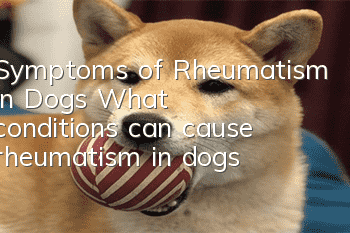翻译错误:Unexpected character encountered while parsing value: <. Path '', line 0, position 0.

The symptoms of subcutaneous lipoma in dogs usually include independent tumors under the skin, which generally grow slowly, vary in size, are light in weight, have false fluctuations, are easily broken, bleed less, and are spherical or nodular. Leaves and irregular leaf shapes usually occur on the chest, back, and limbs. Touch with your hands, there is usually a raised, and the edges are clearer. If a dog's skin appears under the skin of the dog, it is recommended that the owner should take the dog to the pet hospital for pathological examination to identify whether the mass is benign or malignant.
1. The difference between benign and malignant lipomas in dogs
1. The first is the growth rate of the tumor. Benign tumors generally grow slowly, while malignant lipomas grow rapidly in a short period of time. Expansion.
2. Followed by the shape of the tumor. If the edges of the tumor are clear and the shape rules, most of them belong to benign tumors. Conversely, if the shape of the tumor is irregular, the edges are unclear, and the surface is uneven, generally a malignant tumor.
3. In the end, if the tumor occurs, it is also likely to be a malignant tumor.
The lipoma growing on the surface of the skin is generally benign, and the dog owner does not need to worry too much. However, the best method is to take the dog to the pet hospital for slicing training, and then determine whether it is benign.
2. How to treat dog lipoma
The treatment of dog lipoma includes conservative treatment and surgical resection. First of all, if your dog’s lipoma is too large or grows rapidly, it is recommended to go to a pet hospital to have the lipoma removed as soon as possible. Generally, the prognosis of lipoma after surgery is relatively good. Secondly, if the dog's lipoma is relatively small and does not affect the appearance, then generally you will choose not to deal with it. You only need to reduce the fat intake in the daily diet and appropriately increase the dog's amount of exercise.
3. What will happen if your dog has lipoma if it is not removed
Lipomas are generally benign tumors, so under normal circumstances, they will not pose a life threat to the dog if they are not removed. Essence However, the specific situation needs to be distinguished based on the size of the lipoma and the location of its growth. If the place where the lipoma grows will cause pressure on important organs, or it is very large and has affected the dog’s normal life, it is recommended to treat it as soon as possible. Removal to avoid other secondary effects on dogs or the quality of life of dogs.
- What are the reasons why dogs are obese? Do you know these four reasons?
- Symptoms of protein deficiency in dogs How to supplement protein
- How to treat pica in dogs? Have you seen your dog eating randomly?
- Why do dogs need their nails trimmed? Do you trim your dog’s nails?
- What are the uses of probiotics? What should you pay attention to when feeding your dog probiotics?
- How long does it take for a dog to die from heat stroke? How many hours does it take for a dog to die from heat stroke?
- Differences between Shiba Inu and Akita Inu. Pay attention to these points and it’s super easy to tell the difference!
- What are the reasons for dogs’ gastrointestinal problems? Dogs must be fed regularly
- How to treat urticaria in dogs Symptoms of urticaria in dogs
- How to train a dog to hold a ball Dog skill training methods



